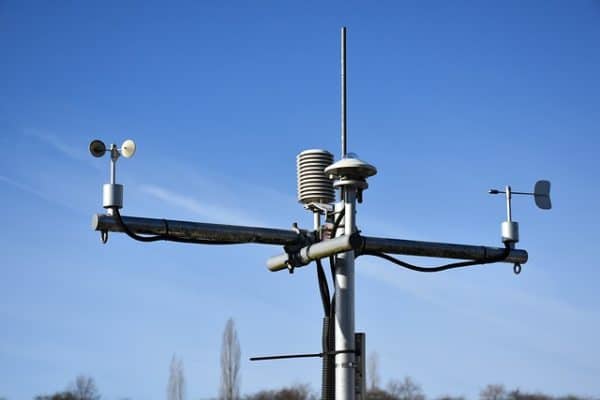
Do you find it interesting always to be aware of the weather conditions around your house? Then you will have a good time with a weather station. The nice thing about weather stations is that they are available in many shapes and sizes. So you can decide for yourself how far you want to go with the number of meteorological values that you want to be able to read! Do you want to buy your first weather station, but do not know where to start? Read this article to uncover everything you want to know!
Different types of weather stations
Weather stations can be divided into two types: analogue and digital. The most significant difference between an analogue and digital weather station is the way of reading the data. An analogue weather station is often seen as more straightforward to use.
Within digital weather stations, there is a lot of variation in what is measured and displayed. Some simple models only display temperature, and professional weather stations measure up to ten different values.
Digital weather stations can be used for indoor or outdoor & indoor purposes. Indoor weather stations don’t have an external sensor for outside, they only measure the values in the house such as humidity and temperature. In general, digital weather stations are more accurate with measuring, especially when they work with an extra sensor that can be hung outside.
Do you want a weather forecast?
Not all weather stations provide a weather forecast. Some only show measurement data, so that you can draw your own conclusions about the weather forecast. When choosing a personal weather station, it is, therefore, useful to think in advance what you want: a model with or without a weather forecast.
Which data do you want to read?
Digital weather stations are often supplied with one or more sensors, which you can place outside. There are different types of sensors, all of which measure a different meteorological value. It is smart to determine your wishes in advance. Below you can read different kinds of measurements that the weather station can perform.
Temperature
For most people, the temperature is the most essential information about the weather. That is why every weather station is equipped with a thermometer.
Rainfall
With a rain sensor on your weather station, you will know how much it has rained precisely.
Humidity
The air humidity is measured with a hygrometer. It is interesting to know the humidity level in the house because too high or too low humidity can be harmful to your health and your (wooden) furniture or floor.
Wind power and wind direction
An anemometer usually measures two things: wind speed and wind direction. The wind speed is measured by a sort of windmill with ‘scoops’ attached to it. The harder it rotates, the harder it blows.
Air pressure
The air pressure is the most essential value used in predicting the weather. You can see that it will change again in a rapidly rising or falling air pressure. So the weather will probably clear up when the air pressure increases and you can count on it to rain when the air pressure drops quickly. The air pressure is measured with a barometer.
UV radiation
A small number of weather stations measure the amount of UV radiation in the air. On that basis, you know how powerful the sun shines that day. Naturally, the UV sensor is also installed outside.
Do you want to connect your weather station to another device?
Nowadays you can connect many weather stations to your computer, tablet or smartphone. This way you get even more insight into the measurement data via special software or an app. For example, you can view historical data about temperature or precipitation.
Additional functions on your weather station
Some weather stations are equipped with additional functions that make the use even more fun or easier.
(Radio controlled) clock
Radio-controlled weather stations often have a radio-controlled clock. They receive the DCF time signal from the atomic clock in Frankfurt, so that you are always aware of an accurate time display.
Sunrise
At some weather stations, you can see what time the sun comes up. Handy if you like to walk or run in the morning after sunrise!
Moon mode
Another function is a display of the moon phase.
How to choose a personal weather station?
Before you even visit the store, you have to be very clear about the physical space and the needs or expectations that you have about this device. So, do some accurate research and buy the one that suits you the most!
 Gearfuse Technology, Science, Culture & More
Gearfuse Technology, Science, Culture & More


